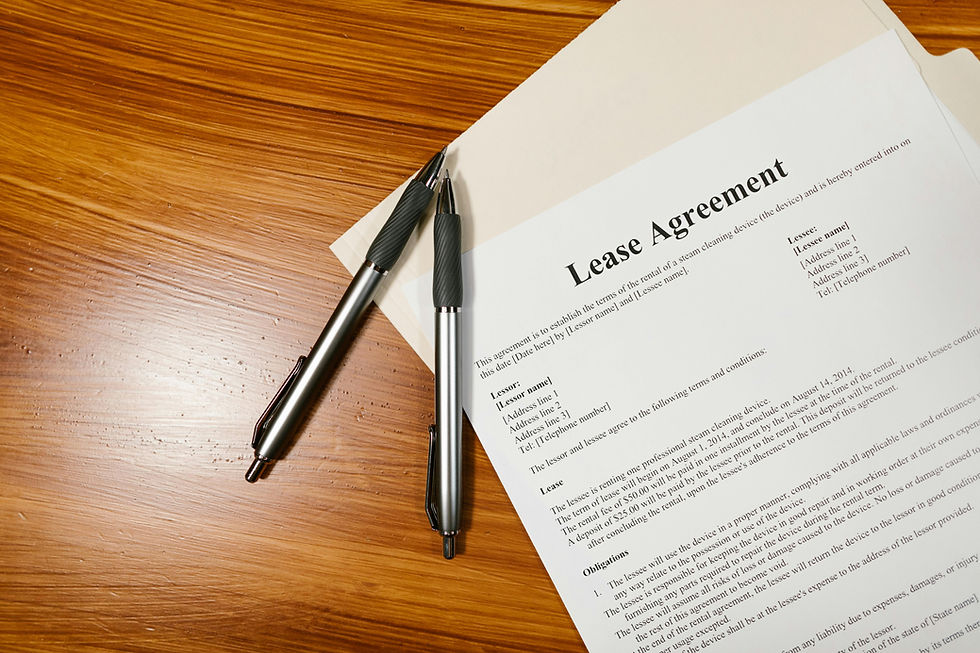Why Location Still Reigns Supreme in Commercial Real Estate Decisions
- eweinblatt3
- Sep 4
- 3 min read

In the dynamic world of Commercial Real Estate Decisions, investors and tenants often weigh factors like cost, design, and amenities. Yet, one principle has remained constant through every market cycle: location is king.
While technology, flexible spaces, and sustainability are reshaping the industry, the importance of location has not diminished—it has evolved. Industry leader Ezra Weinblatt emphasizes that location continues to drive value, accessibility, and long-term potential in ways no other factor can replicate.
Here’s why location remains the most powerful force in commercial real estate decisions and the key aspects every investor or tenant should consider.
1. Accessibility for Tenants and Customers
Why It Matters: Commercial real estate thrives when it connects people. Easy accessibility by car, public transit, or foot traffic enhances a property’s attractiveness to both tenants and their clients.
Key Considerations:
Proximity to highways, airports, or public transport hubs.
Ease of access for deliveries and logistics.
Walkability scores and pedestrian-friendly environments.
Ezra Weinblatt’s Insight: A prime location ensures steady tenant demand, reduced vacancy rates, and resilience even during economic downturns.
2. Talent Attraction and Workforce Dynamics
Why It Matters: In today’s hybrid and competitive work environment, companies want spaces that help attract and retain talent. The surrounding neighborhood and amenities can influence whether employees want to commute there daily.
Key Considerations:
Locations near vibrant communities, restaurants, and retail.
Shorter commute times to improve employee satisfaction.
Areas aligned with younger workforce demographics.
Ezra Weinblatt’s Insight: Modern Commercial Real Estate Decisions are not just about square footage—they’re about aligning with the lifestyle preferences of a company’s workforce.
3. Economic Growth and Market Stability
Why It Matters: A location tied to strong local economic growth often outperforms others in long-term appreciation. Cities or submarkets with booming industries create demand for office, retail, and industrial properties.
Key Considerations:
Local GDP growth, job creation, and demographic trends.
Stability of industries in the area (e.g., tech hubs, logistics corridors, healthcare clusters).
Development projects that signal future growth.
Ezra Weinblatt’s Insight: Investors should think beyond current demand and evaluate future growth indicators when selecting a location.
4. Surrounding Infrastructure and Amenities
Why It Matters: A property’s value isn’t defined by the building alone but by what surrounds it. Nearby amenities, infrastructure, and support services can elevate a property’s desirability.
Key Considerations:
Access to parking, hotels, and conference centers.
Proximity to dining, entertainment, and retail hubs.
Healthcare and wellness facilities nearby.
Ezra Weinblatt’s Insight: Great infrastructure reduces operational friction for tenants and creates an ecosystem that supports long-term occupancy.
5. Risk Mitigation Through Location
Why It Matters: Location also plays a major role in risk management. Environmental risks, regulatory issues, and neighborhood safety can make or break an investment.
Key Considerations:
Flood zones, climate risks, or environmental hazards.
Crime rates and overall neighborhood security.
Local zoning laws and regulatory climate.
Ezra Weinblatt’s Insight: A well-chosen location safeguards investments, ensuring long-term stability even as other conditions change.
6. The Power of Visibility and Brand Image
Why It Matters: For retail and office tenants, visibility equals brand presence. A prominent location not only brings in more customers but also enhances brand reputation.
Key Considerations:
Street frontage and signage opportunities.
Proximity to competitors and complementary businesses.
The prestige associated with the neighborhood or district.
Ezra Weinblatt’s Insight: A strategic address often becomes part of a company’s brand identity—boosting credibility and customer perception.
7. Location as a Hedge Against Market Volatility
Why It Matters: While designs may go out of style and technologies may become obsolete, prime locations rarely lose value. Even during downturns, well-located properties maintain stronger occupancy and rental rates.
Key Considerations:
Historical vacancy and absorption rates in the area.
Performance of local real estate through past downturns.
Supply-demand dynamics specific to the submarket.
Ezra Weinblatt’s Insight: In volatile times, a solid location acts as an insurance policy for investors.
Conclusion: Location as the Ultimate Differentiator
The saying “location, location, location” still holds true in Commercial Real Estate Decisions. While other factors like design, amenities, and sustainability influence choices, none outweigh the foundational importance of where a property sits.
As Ezra Weinblatt highlights, the right location connects tenants to talent, businesses to customers, and investors to long-term stability. It remains the one factor that withstands changing trends and evolving markets.
In the end, buildings can be renovated, technologies can be upgraded, and designs can be refreshed—but the location is permanent. For investors and tenants alike, it will always reign supreme.


